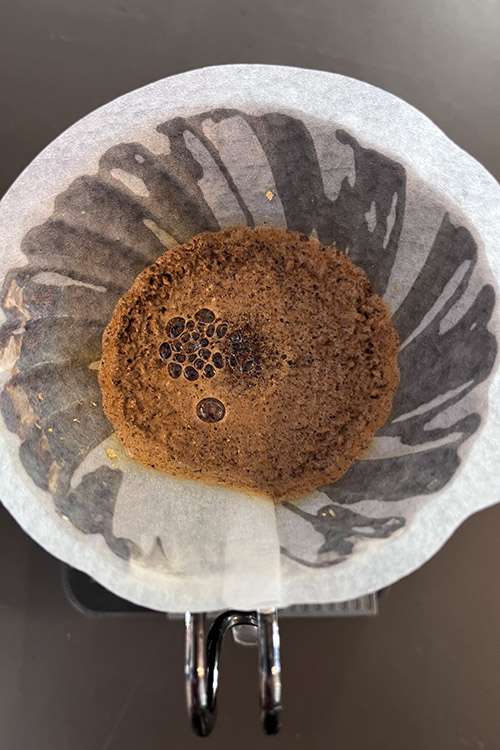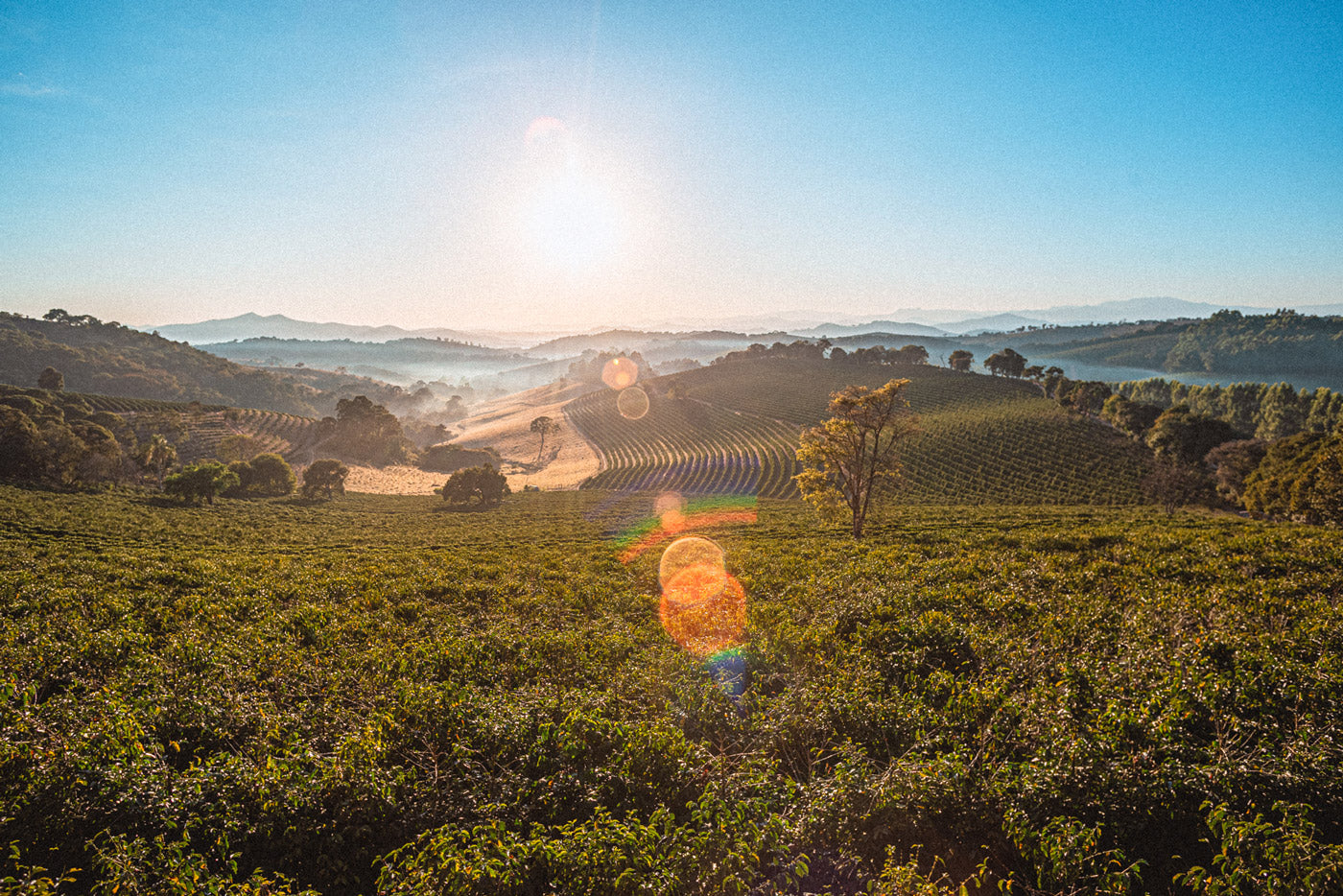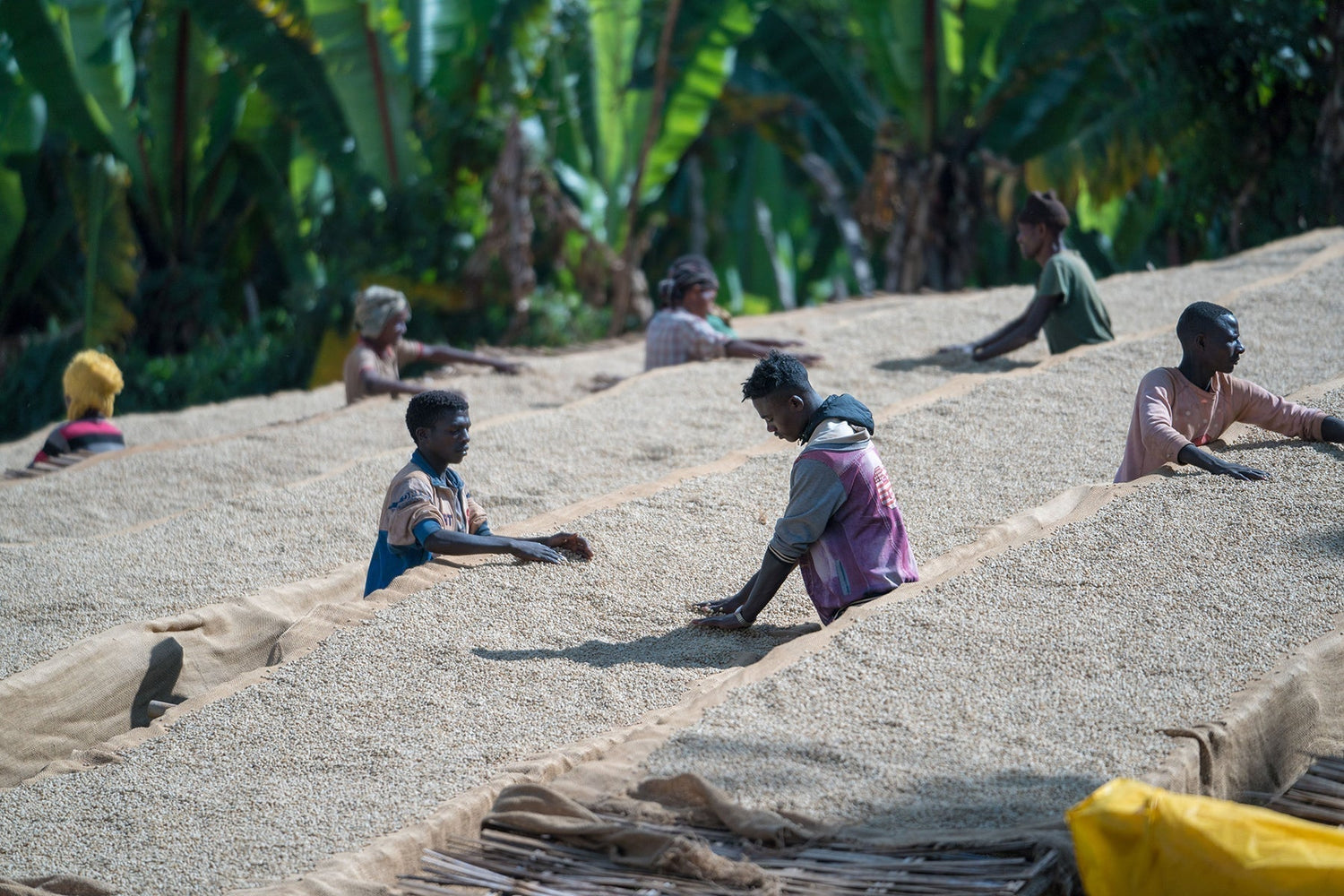Brewing filter coffee is an art in itself, but it's not rocket science . One of the things you should know and pay attention to is blooming. What is blooming? This is the first step on the way to a great-tasting filter coffee. We'll look at the entire brewing process. And of course explain exactly what blooming is and what it's good for.
What is Blooming Coffee - Definition
During roasting, gases – including CO2 – collect in the coffee beans. The darker the roast, the more gases collect. This is why freshly roasted coffee beans are allowed to outgas. Some of these gases can escape directly from the bean, but some remain in the beans because they cannot diffuse through the cell walls. This situation changes when we grind the coffee beans. Freshly before brewing a tasty light roast of wild coffee , we grind the number of grams we have chosen. This breaks open the cell walls and the gas can escape again. This doesn’t happen “quickly” within a second, but continuously. If we now moisten the coffee grounds, water penetrates the cells and displaces any remaining gases, such as CO2. This gas-water mixture causes the coffee grounds to swell and the typical cake forms on the surface. The bubbling and bulging to form a cake – that’s blooming!
What is Blooming Coffee – Where, How and When
Blooming only occurs with pour-over methods and it is the first part. You add a small amount of water (everyone has their own method here - we recommend around 1:3) to the dry coffee grounds and let it brew for about 30 seconds. Some people stir it, others swirl it around, and still others just let it brew. The two goals here are to release the CO2 and to moisten the entire coffee grounds evenly so that there is an even extraction. But is blooming really important?

What is Blooming Coffee – No Bloom
As in all areas of our lives, experimentation is desirable and unavoidable with filter coffee. For example, some baristas who offer pour-over filter coffee in restaurants have developed no-bloom methods. Quite simply because the filter coffee can be served more quickly . Many of these methods involve making a depression in the middle of the ground coffee: when the water is poured in from the middle, the entire ground coffee is moistened more quickly and evenly. This means that you don't have to wait, swirl or stir, but can carry on brewing straight away. Basically, add all the water to the ground coffee in one pour.
What is Blooming Coffee – No-Bloom Challenges
The number one challenge with a quick brew using all the water is that it takes a little longer to saturate all the grounds, which could result in an uneven extraction and an unbalanced cup profile.
You should also turn your water temperature down a little. Hot water dissolves CO2 from the beans more quickly, which can lead to a very agitated coffee powder in a no-bloom process. The result would be over-extraction and bitterness . A low temperature, on the other hand, can cause light roasts to become too acidic.
What is Blooming Coffee – Double Bloom
It was logical that in addition to the blooming and no-bloom methods , there was also double blooming. It basically works very simply: the first bloom is followed by a second. So if you use the recipe for 18 grams of coffee to 280 milliliters of water, you pour around 50 to 60 milliliters for the first bloom and let the whole thing steep for around 30 to 45 seconds. And then you do the same thing again. Here you can also use 60 to 70 milliliters, but only wait 30 seconds. Then you can pour in the rest of the water completely or divide it into two steps that suit you. The goal of a double bloom should be a balanced coffee and it is particularly suitable for coffees that are difficult to brew.

What is Blooming Coffee – the Single Bloom
The simple blooming is self-explanatory. Pour once and let the coffee bloom. But which parameters are appropriate for this? Well, that always depends on the recipe you are using. The amount of water used for blooming should be about two to three times as much as the amount of ground coffee. So for 15 grams of coffee, 30 to 45 milliliters. The temperature should be in the range of 90 to 96 degrees. The blooming phase lasts about 30 seconds. But you can - and should - experiment with all of these parameters. Because they all change the taste of the coffee. In addition, every coffee needs a blooming that is tailored to it and you. Always remember the most important rule when making coffee: if you change one variable, leave all the others the same, otherwise you won't know what the change has achieved.
What is Blooming Coffee – One, two or three
So, there is no bloom, single bloom, double bloom and yes, you can also bloom three times. We recommend at least one bloom because it is important that the CO2 escapes from the coffee grounds. The more often you have a bloom phase, the more you risk over-extracting your coffee, which can lead to bitterness. But our tip: just try it out. The same coffee, the same recipe, with the same water temperature and then do one, two and three (or even more) bloom phases. Or you can change the amount of water for the bloom: 40, 60 or 80 milliliters. Then you will find the optimal amount for you.
Blooming - The amount of water
The amount of water you use for blooming also affects the taste in your cup. For example, we bloomed our Kenia Kagumo with three different amounts: 40 ml, 60 ml and 80 ml of 85 degree warm water. All of this with a filter coffee recipe of 18 g of coffee to 270 milliliters of water. The result was the following. The first brew with 40 ml was a little more pronounced in acidity, the second brew with 60 ml was very balanced and the third brew with 80 ml was not bad, but had a little less aroma compared to the others. But that only applies to the Kenia Kagumo, you can and should experiment with basically any coffee.

Blooming coffee – special case cupping
Those who do cuppings usually follow special cupping rules. Blooming also occurs here, but only to a certain extent. The more the coffee powder bubbles and foams, the more CO2 is in the coffee. This means that it is very darkly roasted or very freshly roasted.
What is Blooming Coffee – Conclusion
So there is no blooming, single, double or even triple blooming. Maybe even multiple blooming. None of the methods is wrong, none of the methods is a miracle cure for "the" optimal coffee. Because the parameters and the number of blooming phases change with every new coffee and with every person who makes or drinks the coffee. Here too, the motto is experimentation. This is the only way to find the perfect blooming for you, your coffee and your palate. #staywild


